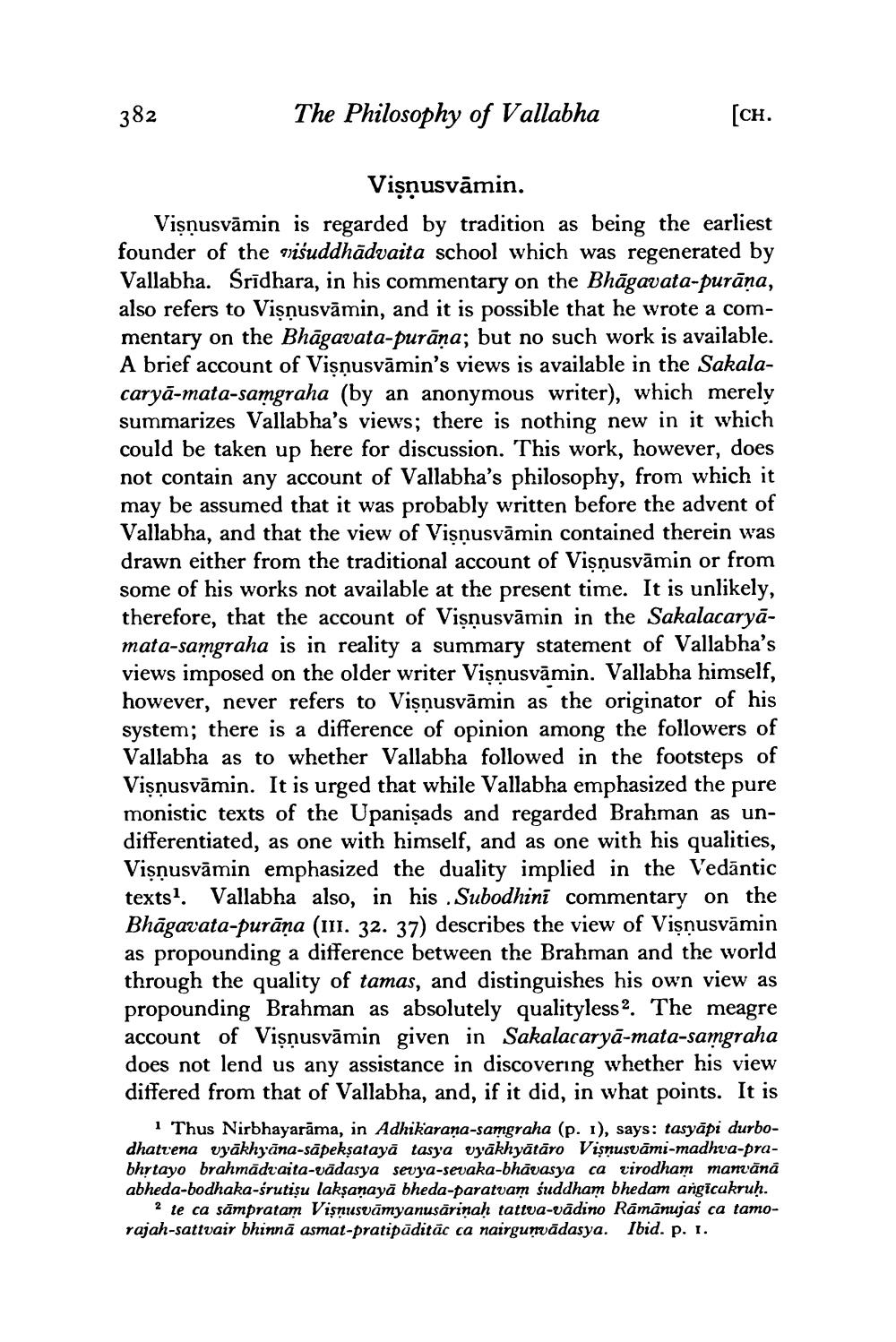________________
382
The Philosophy of Vallabha
[CH.
Vişnusvāmin. Vişnusvāmin is regarded by tradition as being the earliest founder of the višuddhādvaita school which was regenerated by Vallabha. Śrīdhara, in his commentary on the Bhāgavata-purāna, also refers to Vişnusvāmin, and it is possible that he wrote a commentary on the Bhāgavata-purāna; but no such work is available. A brief account of Vişņusvāmin's views is available in the Sakalacaryā-mata-samgraha (by an anonymous writer), which merely summarizes Vallabha's views; there is nothing new in it which could be taken up here for discussion. This work, however, does not contain any account of Vallabha's philosophy, from which it may be assumed that it was probably written before the advent of Vallabha, and that the view of Visnusvāmin contained therein was drawn either from the traditional account of Visnusvāmin or from some of his works not available at the present time. It is unlikely, therefore, that the account of Vişnusvāmin in the Sakalacaryāmata-samgraha is in reality a summary statement of Vallabha's views imposed on the older writer Vişnusvāmin. Vallabha himself, however, never refers to Visnusvāmin as the originator of his system; there is a difference of opinion among the followers of Vallabha as to whether Vallabha followed in the footsteps of Vişnusvāmin. It is urged that while Vallabha emphasized the pure monistic texts of the Upanişads and regarded Brahman as undifferentiated, as one with himself, and as one with his qualities, Vişnusvāmin emphasized the duality implied in the Vedāntic texts?. Vallabha also, in his . Subodhini commentary on the Bhāgavata-purāņa (. 32. 37) describes the view of Vişnusvāmin as propounding a difference between the Brahman and the world through the quality of tamas, and distinguishes his own view as propounding Brahman as absolutely qualityless 2. The meagre account of Vişnusvāmin given in Sakalacaryā-mata-samgraha does not lend us any assistance in discovering whether his view differed from that of Vallabha, and, if it did, in what points. It is
1 Thus Nirbhayarāma, in Adhikarana-samgraha (p. 1), says: tasyāpi durbodhatrena vyākhyāna-sāpeksatayā tasya vyākhyātāro Vişnusvāmi-madhva-prabhrtayo brahmädraita-vādasya sevya-sevaka-bhāvasya ca virodham manvānā abheda-bodhaka-śrutisu laksanayā bheda-paratuam suddham bhedam angicukruh.
2 te ca sampratam Vişnusvāmyanusārinah tattva-vadino Rāmānujaś ca tamorajah-sattvair bhinnā asmat-pratipūditāc ca nairgunvādasya. Ibid. p. 1.




